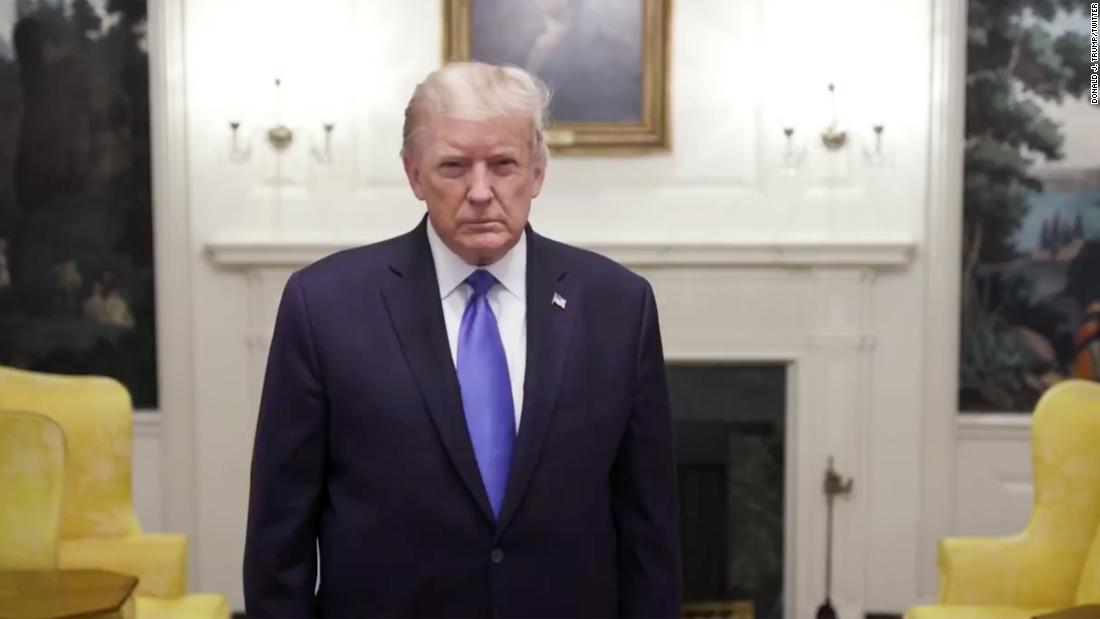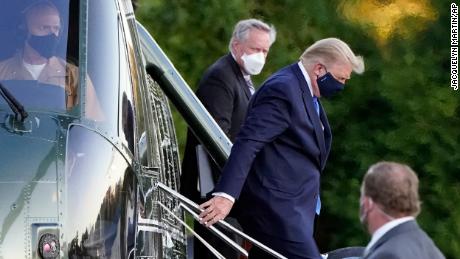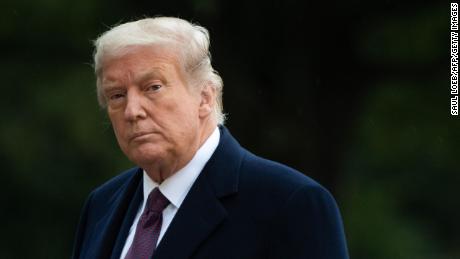Opinion: Trump’s diagnosis threatens the stability of our country
This never should have happened.
The fact is that by downplaying a public health crisis for many months, President Donald Trump and his aides have created a national security crisis.
Why? By putting himself in harm’s way, the President has destabilized the executive branch — and the country — just weeks ahead of the most important election in modern times.
If the President and his team had followed the guidance of the Centers for Disease Control and Prevention, we likely wouldn’t be talking about the White House as the potential epicenter of a “superspreader” event.
While we hope Trump’s condition remains stable and improves, officials must now prepare for the possibility that he may be unable to discharge the powers and duties of his office.
It’s not just Trump: A number of the President’s key lieutenants like Attorney General Bill Barr and national security adviser Robert O’Brien, who have important government responsibilities, were potentially exposed.
I don’t want to overstate the severity of the situation. But should it get worse, we could face serious national security concerns.
Will our adversaries try to take advantage of the US government being thrown off-kilter?
Let’s say the Chinese invade Taiwan. Is the President in a state of mind to lead the response?
Who should the secretary of state call after such an incident? Who should world leaders turn to during a time like this?
What if a massive cyberattack hits our federal networks? Is the commander in chief prepared to react, or will he leave Vice President Mike Pence to defend the United States?
Right now, it doesn’t appear the situation is grave enough to warrant total alarm. But it’s possible, and that’s the point.
The administration’s national security team must be making preparations every single day while we’re in this high-risk moment.
When I helped run the Department of Homeland Security, we spent a great deal of time focusing on the “continuity of government” (COG) — the systems and procedures that kick into place during times of crisis to make sure the federal government continues to function.
However, COG protocols are only as good as the people who follow them.
From a national security standpoint, the White House should have been treating this virus like the biological threat that it is and taking active measures to prevent its spread through the building on any given day.
It’s not too late to reverse course and do what’s right.
The President and the Vice President should remain separated as much as possible.
Unnecessary in-person meetings should be avoided, even if all participants are tested.
The schedules and movements of Cabinet members should be more closely scrutinized and coordinated, to make sure they are not in the same place at the same time too often.
And CDC guidelines should be followed to the letter, especially when it comes to using personal protective equipment and avoiding large gatherings.
Sadly, we will look back at this episode and see photographs of White House aides, top officials, and elected leaders gathered together, hugging, laughing, and sitting shoulder-to-shoulder at mostly mask-less events, mere feet away from the President — all during a global health catastrophe.
This is not the image of an administration rushing to contain a biological threat. It’s the image of it carelessly spreading one.
When President Trump recovers, as we all hope he will, he must announce immediate steps that are being taken to prevent this from happening again.
He also owes an apology to the families affected, not to mention the many thousands of American families who’ve lost loved ones as the White House set a bad example for staying safe.
In the meantime, we need complete transparency from the White House about the condition of the nation’s chief executive. Indeed, the continued stability of our government depends on it.
![]()






